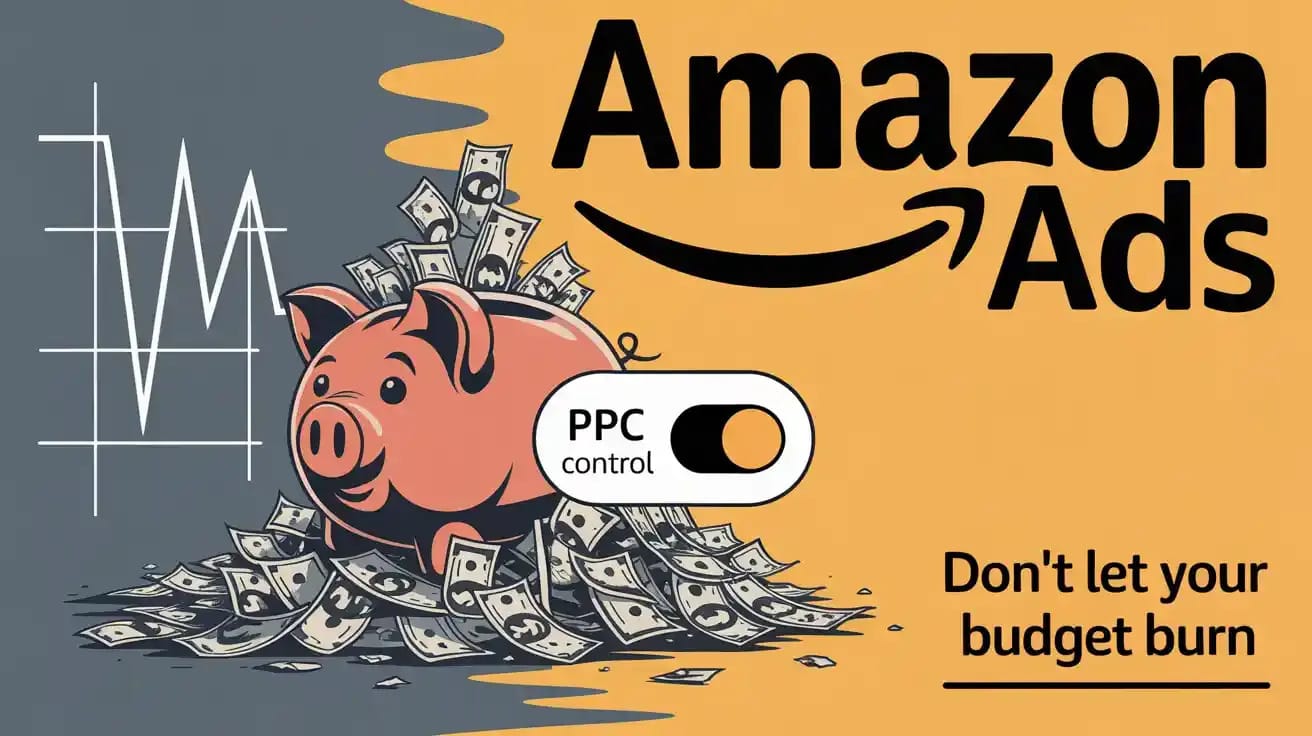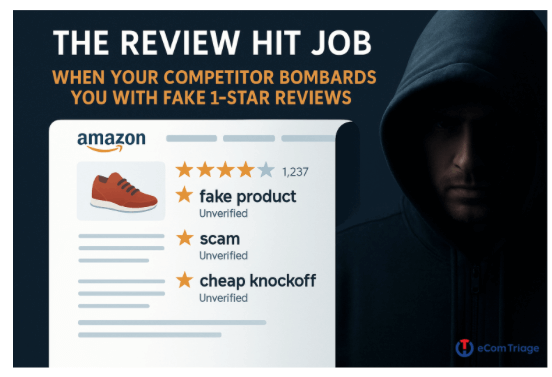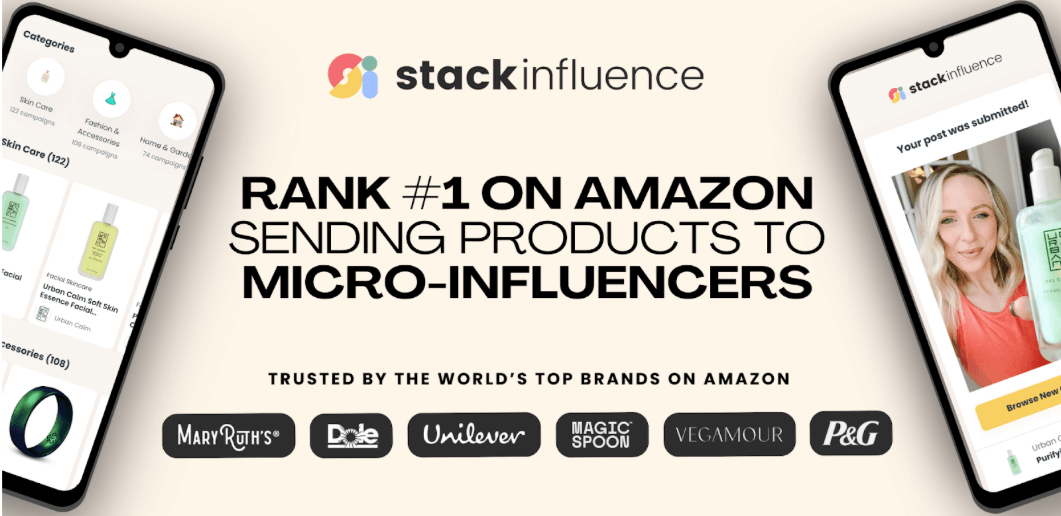- Billion Dollar Sellers
- Posts
- [ BDSN ] This hidden PPC setting burns your budget
[ BDSN ] This hidden PPC setting burns your budget

 | SPECIAL EDITIONI am busy co-hosting the Marketing Misfits Cigar Weekend in Tampa with Norm right now, so I won’t be able to write a brand new edition of the newsletter. |

🪦 THE DECLINE of TRADITIONAL PRODUCT RESEARCH
Sarah stared at her Jungle Scout dashboard, watching another "high opportunity" product she'd launched six months ago continue its slow descent into mediocrity.
Despite perfect keyword research, competitive pricing, and solid PPC campaigns, sales were flat. Sound familiar?
Meanwhile, across the e-commerce world, BDSS Dream 100 member Josh Hadley, an 8-figure Amazon seller on his way to 9 figures, was having a very different experience.
He turned OFF his Amazon ads during Prime Day for his most viral products and still doubled his closest competitor's sales.
His secret? He'd completely abandoned traditional Amazon research tools.

The Old Way Is Broken
"We no longer are looking at Datadive, Helium 10, or Jungle Scout for opportunities," Josh revealed in a presentation last week in the Billion Dollar Sellers Club. "We're just looking at TikTok Shop."
Think about it: Traditional tools show you what's already working on Amazon, meaning you're entering a crowded battlefield where everyone has the same data. You're fighting for scraps in an oversaturated market.
The New Playbook: TikTok-First Product Research
Here's Josh's exact process for finding his next million-dollar products:
Step 1: Use Kalo Data Instead of Amazon keyword tools, Josh uses Kalo Data to analyze TikTok Shop performance. This tool reveals:
Which products are generating the most GMV (Gross Merchandise Value)
Top-performing creators for specific product categories
Real-time viral product trends
Competitor analysis showing exactly who's selling what

Step 2: Identify Viral Patterns Josh asks one simple question: "What's going viral on TikTok shop right now?"
If a product can generate massive organic reach through creators, he knows it will crush on Amazon too without needing to rely on expensive PPC campaigns.
Step 3: Skip the Amazon Validation Here's the paradigm shift: "I don't even have to look at the PPC data. I don't have to look at the competition. I don't have to look at the reviews because frankly, it does not matter."
Why? Because he's bringing his own demand through creator networks, making traditional competitive analysis irrelevant.

The Results Speak for Themselves
Using this approach, Josh:
Turned a struggling business (down 25% year-over-year) into 100%+ growth
Achieved break-even on TikTok Shop while 5X-ing Amazon sales for viral products
Regained Amazon bestseller badges lost to overseas competition
Maintained prices double his competitors while outselling them
Your Action Plan
Get Kalo Data access - This is your new product research engine
Monitor TikTok Shop trends - Look for products generating consistent GMV
Test first on TikTok Shop - Validate demand before heavy Amazon investment
Scale to Amazon - Once proven viral, launch on Amazon with confidence

😴 DON’T SLEEP on THESE 2 OVERLOOKED AMAZON REPORTS
Prem Gupta just dropped a gold nugget on Linkedin for brand owners: Amazon’s Demographic Report + Market Basket Analysis (MBA) combo is a game-changer for audience-level insights and cross-sell strategy.
Here’s the breakdown:
🔍 Market Basket Analysis = See what customers are frequently buying with your product.
👥 Demographic Report = Learn who’s buying each ASIN (age, gender, income, etc.).

Example:
Selling a low-carb cookie?
📊 MBA shows it’s often bought with keto creamer + trail mix.
📈 Demographics reveal the top buyers are married women aged 25–34, with an income of $60–80K.
Now you can:
🎯 Launch Sponsored Brand/Video campaigns that bundle all 3 products
🖼️ Tailor creatives to match the buyer persona
📦 Build cross-sell kits or bundles
🔄 Optimize SD campaigns by real customer traits
If Gen Z males (18–24) are buying the cookie solo?
👉 Build a campaign like “Energy Stack for Young Hustlers” to match their vibe.
This combo lets you create audience-specific portfolios, control ad spend smarter, and drive higher conversion through data-informed storytelling.

😍 EYE CONTACT COULD BOOST CONVERSION by 30% or MORE
Here's a simple tweak that could significantly improve your ad results: strategically directing your model's gaze based on what you're selling.
For pleasure-focused products (luxury items, home decor, beauty products, entertainment): Have models look away from the camera.
For functional products (tools, software, problem-solving items) or sensitive topics: Have models look directly at the viewer.

Researchers ran five different experiments and found some eye-opening results:
When models looked away from the camera:
A sunhat ad generated 30% more sales
A luxury watch ad scored 19% higher in ratings
Anti-smoking campaigns saw 40% more sign-ups (jumping from 53.8% to 75.2%)
When models made direct eye contact:
Functional cafe ads (highlighting location and convenience) performed 12% better than when models looked away
Looking away = Easy identification. When a model isn't making eye contact, viewers can more easily imagine themselves in that person's place. For pleasure purchases, this mental substitution is exactly what you want: customers picturing themselves enjoying your product.
Direct eye contact = Trust and separation. Eye contact creates credibility and trustworthiness, making it perfect for explaining functional benefits. It also maintains healthy psychological distance for sensitive topics where you don't want viewers identifying too closely with negative scenarios.

Pleasure-focused products to test:
Home decor and furniture
Fashion and accessories
Beauty and skincare
Hobby and craft supplies
Luxury or premium items
Function-focused products to test:
Tech gadgets and tools
Health and safety products
Business services
Educational courses
Problem-solving software
Start A/B testing this approach on your highest-performing ads first. The cost to reshoot or find alternative creative is minimal compared to the potential upside.
Consider your product's primary selling point: if customers buy it to feel good, look away. If they buy it to solve a problem or get specific results, look directly at them.
Remember, this applies to video ads, static images, and even email marketing creative: anywhere you're using human models to sell your products.

Reach page 1 on Amazon simply by sending free products to Micro-Influencers
Use the platform Stack Influence to automate Micro-Influencer product seeding collaborations at scale (get thousands of collabs per month) and increase your Amazon ranking, generate UGC, and boost up your recurring revenue like never before.
Top Amazon brands like Magic Spoon, Unilever, and MaryRuth Organics have been able to get to #1 page positioning on Amazon and increase their monthly revenue as high as 13X in as little as 2 months.
Pay influencers only with products (stop negotiating fees)
Increase external traffic Amazon sales (get to top page rankings)
Get full rights image/video UGC (build your brand with authentic content)
100% automated management (don’t lift a finger to get influencer collabs at scale)
Don't believe it? Check out the results from the Blueland Micro Influencer campaign which generated a 13X ROI scaling up influencers on Amazon.
After successfully raising investment on Shark Tank, Blueland turned to Stack Influence to boost their Amazon sales and become a top selling listing using Micro Influencer marketing.
Increase your Amazon listings ranking for targeted keywords and multiply your organic recurring revenue in 2025!
Get 10% OFF by signing up this month

📛 THE HIDDEN PPC SETTING THAT’S BURNING YOUR BUDGET
Amazon quietly rolled out a new Sponsored Products setting that defaults to “maximize reach.”
Translation: Amazon is aggressively spending your ad dollars on off-Amazon placements (think third-party sites)—and most of these don’t convert.
How to stop the bleed:
Go to Campaign Manager > Sponsored Products > Settings.
Change “maximize reach” to “minimize spend.”
That one click can plug a major leak. Want proof?
Run this report:
Go to Reports > Sponsored Products > Placements
Set date range: Last 60 days
Filter for: “Off-Amazon”
Sort by Spend
If your ACOS is sky-high or conversions are nonexistent, you’re lighting money on fire. Fix it today.

💰 The Truth About “Unspent Budget” (It’s Not Sitting Idle)
Amazon also launched a beta feature that reallocates unspent campaign budget within portfolios.
It sounds useful—and it can be—but only if you know what’s happening behind the scenes.
If Campaign A underspends, Campaign B or C in the same portfolio can automatically use the leftovers.
Campaigns can spend up to 100% more than their daily budget.
But your portfolio monthly cap still applies—so you won’t be charged more than your (Daily Budgets × Days in Month).
⚠️ The Catch: If you're not monitoring performance, one underperforming campaign can start pulling in extra budget, amplifying wasted spend fast.
✅ How to Use It Without Regret:
Turn it on:
Go to Portfolios > Modify Portfolio > Enable Unspent Campaign Budget.Set a strict portfolio budget cap:
That way, no matter how many leftovers get moved around, you won’t blow past your max.Audit performance weekly:
Reallocate only if converting campaigns are being throttled due to daily budget limits.
Amazon’s latest budget features are double-edged swords. Used strategically, they can help you win traffic on high-converting days. But left on autopilot, they’ll quietly funnel your cash into low-performing off-site ads or bloated campaigns.

🕹️ THE PRODUCT REVIEW HIT JOB
Imagine this: You wake up and wonder why you’ve had a bunch of returns and that your sales are lower than normal. You look into it and find over the last few days your product has been raked over the coals with some terrible reviews.
But they aren’t real.
They look coordinated, they’re suspiciously worded, and all 1-star.
One says, “fake product.” Another, “Scam.” But none of them mention actual defects, product details and perhaps they’re not even verified purchases.
If this has happened to you, you are not alone

Why Bad Reviews Aren’t Always from Customers
Amazon’s marketplace is more cutthroat than ever. Blackhat sellers weaponize fake negative reviews to:
Suppress your listing
Get your product below a 4.3 rating
Kill conversion rates with just a handful of 1-star bombs
These reviews often:
Arrive in waves over a few 3 to 7 days
Use similar language or complaints
Appear on your new launches or top-performing ASINs
The scary part? They can tank your product ranking overnight.
What Amazon Won’t Tell You About Review Removal
Yes, you can report abusive reviews, but what has that button ever done for anyone?
NOTHING. So you file a case only to find that Amazon rarely removes them on the first attempt.
Why?
Because most sellers file emotional “please remove this” requests. Those don’t work.
To get reviews removed, you need:
✅ The ASIN, review title, the review body
✅ Precise TOS violations cited (e.g. promotional abuse, false accusations)
✅ Account-level abuse trends tracked across multiple ASINs
✅ A documented review fingerprint (identical phrasing, timing, or phrasing patterns)
✅ Escalation Path beyond Community Help
✅ Tell Amazon what the solution is (remove this review)
If you need help or you’re seeing review bombs and Amazon isn’t helping, there are ways to escalate, if you know how.
Danan Coleman is the founder of eCom Triage. He’s a veteran Amazon seller and his team helps brands monitor ASINs for critical issues with Catalog Defender and remove negative reviews.
He built a GPT (in beta) based on every policy and quote on Amazon websitesI’ve ever been able to scrape together about review policy and it helps you build a case to send to Amazon. He’s giving it away to BDSN subscribers.

🐶 DOES THIS RUFUS IMAGE HACK ACTUALLY WORK?
Dream 100 member Matt Kostan over at ProductPinion has a sneaky trick worth testing.
Can you keyword stuff your images on Amazon?
This used to work very well on Google (then they changed it). The it worked on TikTok for a while influencing search results before TikTok changed their OCR methods.
Amazon’s AI is reading your images which means visible text can get indexed and read by Rufus. But what about “hidden text?”
Here’s a sneaky trick worth testing. Try embedding keywords in your main image using text that’s just slightly off-color from the background.
For one of Matt’s products, if someone asked Rufus “I want a gift perfect for Apple fan boys,” he’d want Rufus to recommend it.

But he wouldn’t actually write that in the listing since it feels off-brand and a bit negative.
Want to try it?
Think of a keyword you’d like to rank for but wouldn’t normally show to shoppers. Add it to your main image in a subtle way using slightly different color text. Then check how Amazon sees it using this tool: imagechek
If imagechek can read it, upload the image to your listing and see if you get indeed for it or if Rufus picks it up.
It’s not a 100% proven theory, but it feels like old-school Google SEO. Worth testing.

🛒 THE SHELF is DEAD: DEMAND is the NEW BATTLEFIELD
BDSS Dream 100 member Destaney Wish says if your answer to “How do people find your products?” is “on Amazon” or “in stores,” you’re already falling behind.
Why?
Because product discovery has changed. Shoppers now:
See products before they even know they need them (social feeds, podcasts, TikTok, TV).
Ask AI what to buy, not search Amazon.
Trust personalized recommendations and contextual discovery over page-one SEO.
🔄 The Path to Purchase is No Longer Linear
The traditional funnel is fading. Your product is now competing:
Not just with what’s on shelf or Amazon's page one…
But with AI-generated product suggestions, UGC, and creator-driven content.
If you’re only optimizing your PDP and running Sponsored Products, you’re showing up too late.
🔑 Action Steps: How to Win in the New Era of Discovery
1. Create Demand Before They Search
Use social media, content creators, podcasts, and even TV ads to generate awareness before the search happens.
Your goal: when customers ask AI what to buy, they already know your brand name.
2. Think Like a Brand, Not Just a Seller
Brands build context. Sellers chase clicks.
Invest in brand stories, video, creator UGC, and top-of-funnel education.
3. Dominate the First Touchpoint
Run creative that educates and entertains, not just converts.
When the customer eventually does search or ask AI, they already have bias in your favor.
4. Lean into Imperfect Attribution
Don’t let the lack of clean attribution stop you. That TV ad, TikTok, or Instagram story might be the spark that drives an Amazon sale two days later.
Track indicators (like branded search volume) instead of obsessing over last-click ROAS.
5. Prepare for AI-Driven Discovery
AI is curating shopping recommendations.
If your product doesn't perfectly match the user's needs or lacks a brand connection. AI won’t show you.
The digital shelf is overcrowded. Retail media is pay-to-play. And AI is rewriting the rules.
Start showing up before customers realize they’re shopping.

✌🏼 See you again Thursday …


